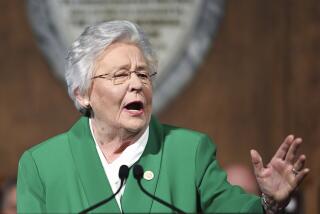Organize, don’t politicize
LAST MONTH, the Chicago City Council voted to require all big-box stores -- those with at least 90,000 square feet of retail space -- to pay their employees a “living wage”: $9.25 in 2007, $10 in 2010, and inflation-indexing thereafter. Although the move will affect large retailers such as Sears and Home Depot, the primary target of the ordinance is nonunion Wal-Mart, the largest private-sector employer in the country.
Not surprisingly, AFL-CIO leaders heralded the vote as a triumph for workers who barely scrape by on Wal-Mart wages while scrambling for meager benefits. For the labor movement, Wal-Mart is the prime symbol of both “low-road” capitalism and the decline of American manufacturing.
But this may be only a partial victory for progressive forces in Chicago. The American labor movement is using political power to make up for its own failure to organize new unions. It’s unclear whether this trend is a sign of weakness or strength.
Throughout American labor history, a debate has raged about what the appropriate approach to government should be. Samuel Gompers, the 19th century founder of the American Federation of Labor, advocated steering clear of bureaucratic entanglements and focusing instead on “pure and simple” unionism -- wages, benefits and working conditions. Workers, he argued, would be more loyal to unionism if they won their own gains, rather than having them granted by the state.
During the crucible of the 1930s, the dynamic shifted toward political involvement. Labor’s dramatic organizing gains during the Depression came partially as a result of President Franklin D. Roosevelt’s more positive attitude toward unionization. Industrial workers flocked to new unions in the auto, steel and rubber industries, and Roosevelt gained a powerful new constituency. He signed the National Labor Relations Act, guaranteeing workers the right to organize and outlawing many employer practices designed to thwart unions.
By the mid-1950s, one-third of the nonfarm labor force (public and private) belonged to unions. Since then, organized labor has experienced a steady decline. Unions lost their early elan and vigor, contract negotiations became routine and corporate America went on the economic and political offensive. President Reagan’s busting of the Professional Air Traffic Controllers Organization 25 years ago this month symbolized labor’s fate. Today, only 9% of the private-sector workforce is unionized.
It should be no surprise that in confronting this national/corporate rout, creative labor leaders such as Andy Stern, president of the 1.8-million-member Service Employees International Union, have turned to sympathetic local governments for the benefits and security that traditionally came, shop-by-shop, through hard-won union battles.
Corporate leaders, who brought this situation on themselves, have worried that a possible antibusiness virus will spread from Chicago to the rest of the country. In Los Angeles, where Mayor Antonio Villaraigosa and the City Council are friendly to labor, living-wage laws have been enacted on businesses that contract with the city. Employees at several large new developments, such as downtown’s LA Live, will enjoy city-brokered wage deals as well, with new hotels being open to unionization.
Although these victories should be hailed, what government gives, government can take away. The National Labor Relations Board, which once served as labor’s protector, is now an impediment to organizing. And if workers see the government as the source of their benefits, what incentive do they have to join unions?
The means to a more equitable and democratic society can only come through the expansion of collective bargaining rights to millions of unrepresented workers. The strategic use of living-wage laws, like what has occurred in Los Angeles, can raise living standards and pave the way for more unionization at the same time.
Jeffersonianism has always been a fundamental part of the American labor movement. While recognizing the power and importance of the state, the most successful and dynamic unions have also had a healthy independent ethos. Despite its flaws and current weakness, the best bet for providing the protection and decency that working people need is still a revitalized labor movement.
Some labor leaders argue that the Gompers approach simply doesn’t work in today’s hostile environment, and that improving conditions through politics is the only alternative. There is some truth to this. After all, where would the elderly be without Medicare and Social Security? But if there is a future for organized labor in the private sector, workers have to build power from the bottom up. Government can be helpful, but unions also have to save themselves.
More to Read
Inside the business of entertainment
The Wide Shot brings you news, analysis and insights on everything from streaming wars to production — and what it all means for the future.
You may occasionally receive promotional content from the Los Angeles Times.










